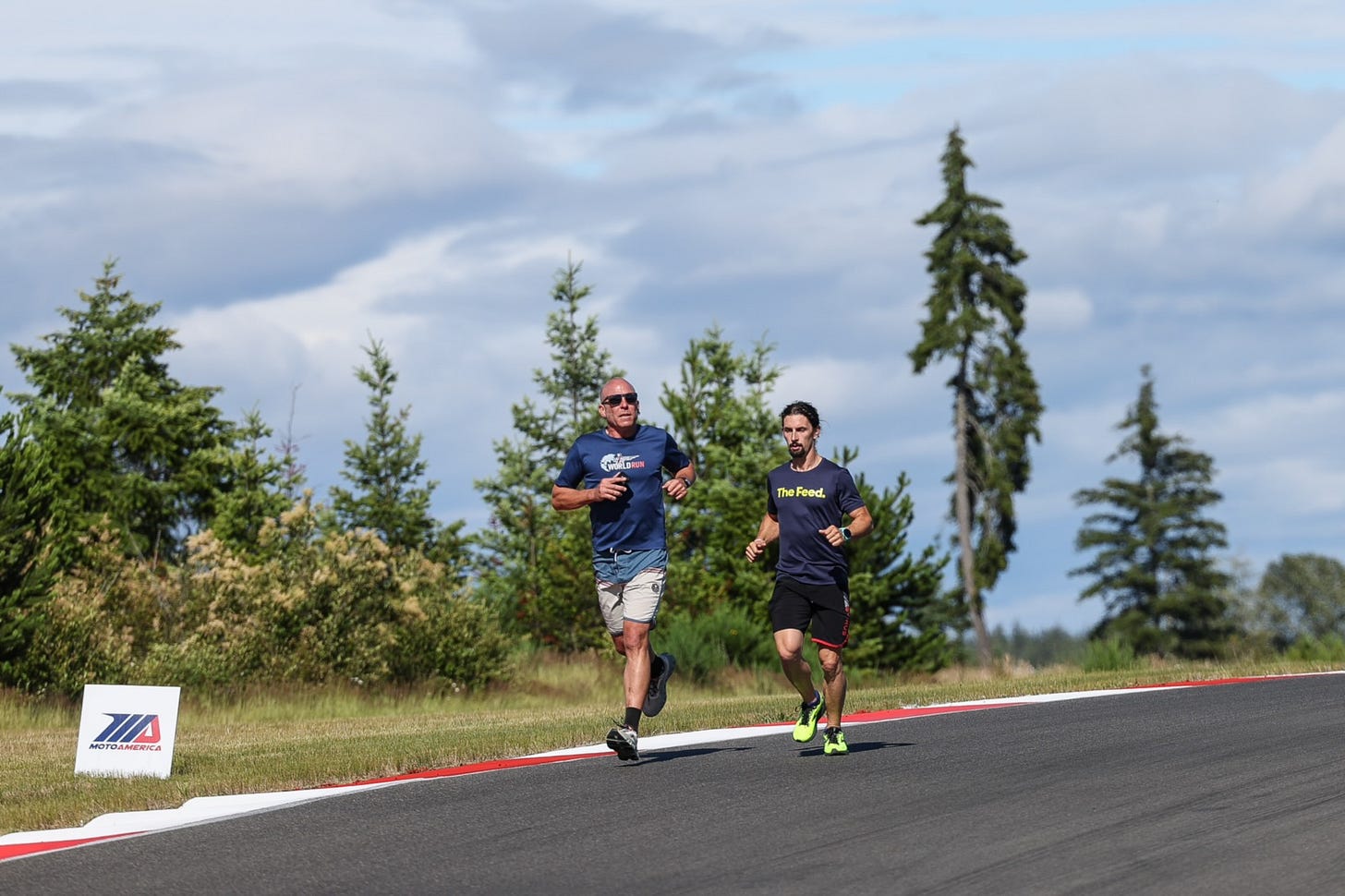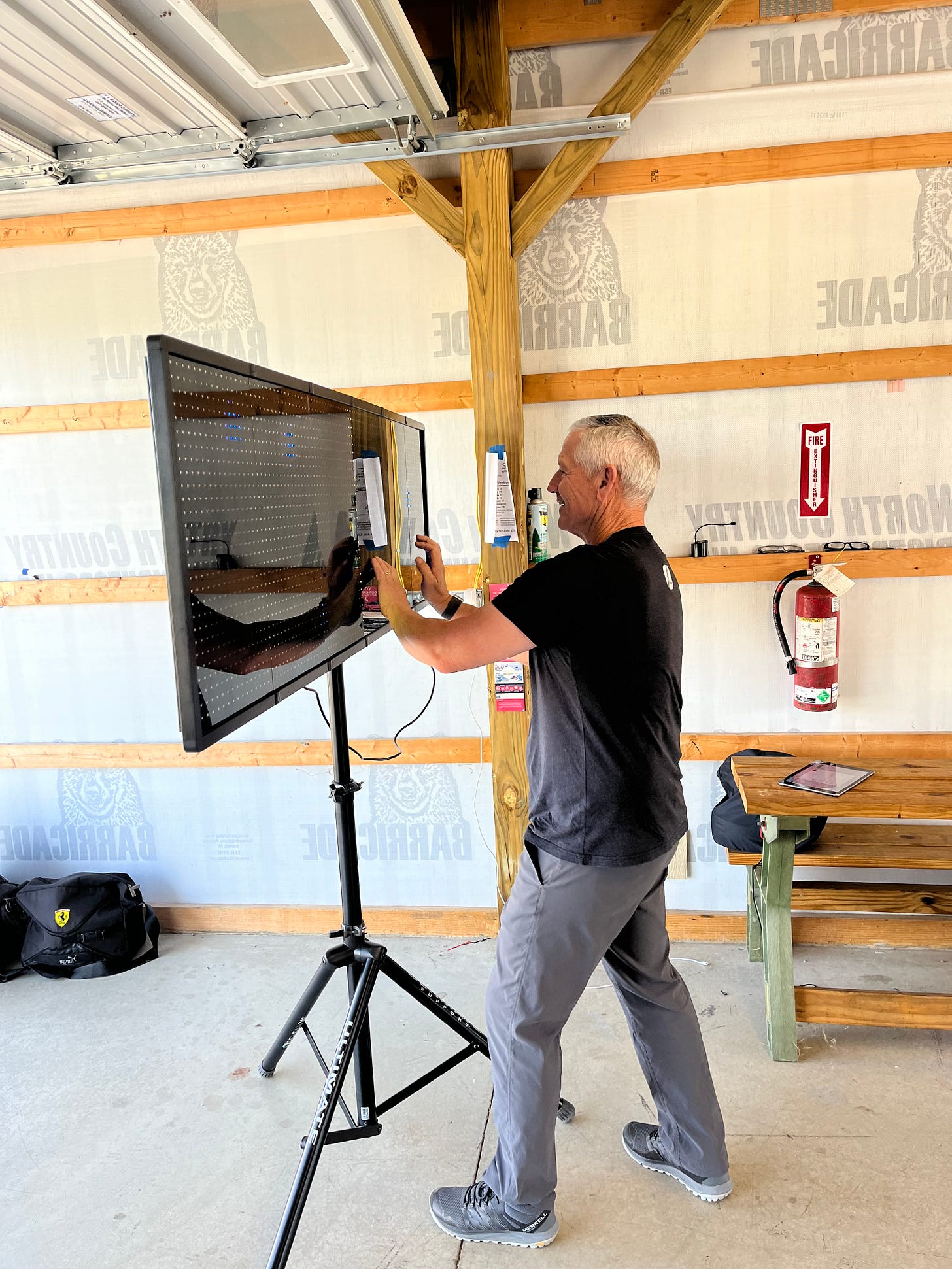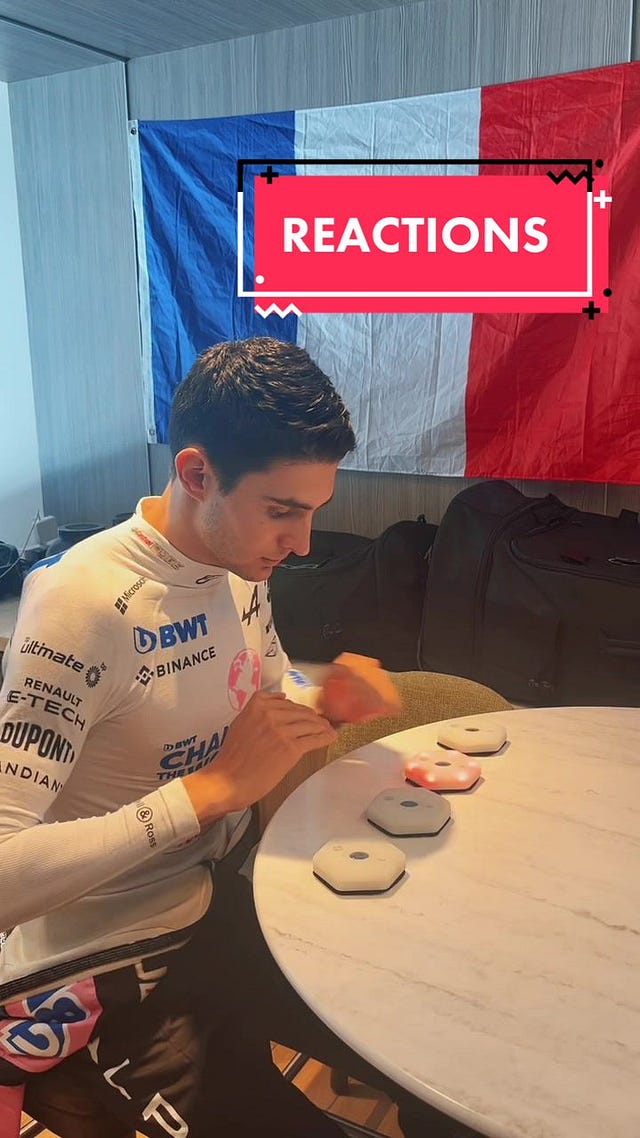[FUNDAMENTALS] WHY YOU NEED TO TAKE WARMING UP SERIOUSLY
What does your warm-up routine look like?

In nearly every sport, athletes undergo some form of warm-up routine to prepare for the high-performance work that lies ahead.
In motorsports, however, we often act like the car or motorcycle is the only vehicle that needs to be up to operating temperature.
We never roll out of pit lane with a cold engine, but we routinely take the green flag with a cold body and brain.
There are two systems that are more important than the coolant temperature in your engine: your body and your brain.
Too often, we jump straight into hard braking, aggressive acceleration, and forceful corner entries without doing anything to prepare ourselves to perform.
No mental ramp-up. No physical activation. Just go. And yet we expect to make fast, precise decisions under pressure.
That approach doesn’t set us up for success. It actually sets us up to struggle. It’s high time we treat preparation with the same seriousness as performance.
In motorsports, a complete warm-up routine should cover three essential areas:
Vehicle
Physical
Mental
Let’s break down each one of these areas, why they deserve attention, and how you can build a warm-up that will set you up to perform at your best.
Vehicle Warm-Up: The engine, transmission, differential, brakes, and tires are designed to perform best in a particular operating range. The following tips will prepare those key areas for the track:
1. Engine: If you drive or ride to the racetrack, the engine will warm up along the route. If you trailer your vehicle, you’ll need to build heat into the engine before your first session.
About 45 to 60 minutes before you are scheduled to take to the track, fire up the engine and let it idle until the temperature reaches approximately 80% of normal operating range. This gentle heat soak lightly stresses internal components while gradually warming the engine, transmission, and lubricant.
Introduce a second warm-up cycle about 10 minutes before your session to keep the temperatures consistent. The goal is simple: warm the engine oil and evenly heat internal components.
2. Brakes: Start building brake temperature as you roll out of the pit lane.
Gentle, progressive brake applications not only build heat but give you feedback on brake feel and consistency.
Use this time to confirm everything’s working as expected.
3. Drivetrain: Allow the drivetrain to settle in during the out lap.
Avoid high rpm (refrain from using the final 1,000 rpm before redline), hard initial braking, or aggressive inputs.
Once all components are up to temperature and everything feels sufficiently dialed-in, resume full application.
4. Tires No Warmers: Track tires need heat to perform properly. Cornering aggressively too quickly or babying them for too long will compromise performance and lead to uneven wear.
Tires warm through carcass flex, so focus on strong, straight-line braking and clean, smooth acceleration off corners.
Allow mid-corner grip to build gradually as tire temperature increases.
5. Tires With Warmers: When using tire warmers, the goal should be to match tire temperatures with the expected track-operating temperatures.
Adjust tire-warmer temperatures based on ambient conditions to avoid big pressure swings once you are on the track.
Even with tire warmers, a proper out lap is required to stabilize pressures and sync the entire system—carcass, tread, wheel, suspension.
Physical Warm-Up: Pre-competition warm-ups are commonplace in practically every athletic discipline. Yet in motorsports, especially in amateur and lower professional ranks, only a small percentage of drivers or riders perform any physical preparation prior to pulling on their helmets. (Take note: Everyone at the sharp end does, in fact, employ a warm-up routine.)
Why is physical warm-up essential?
1. Increased Blood Flow
Improved oxygen delivery: Elevating your heart rate increases blood flow, allowing more oxygen and nutrients to reach working muscles.
Muscle temperature: Warmer muscles are more pliable and efficient, reducing injury risk and improving responsiveness.
2. Muscular Preparedness
Better muscle function: Warm muscles contract faster and more powerfully, helping you perform with more precision and strength.
Improved coordination: A proper warm-up sharpens neuromuscular control, making your movements smoother and more accurate.
3. Injury Prevention
Increased flexibility: Warming up increases muscle and tendon elasticity, lowering the chance of strains and sprains.
Joint lubrication: It activates the production of synovial fluid in your joints, reducing friction and wear.
4. Components of an Effective Physical Warm-Up
General warm-up: Low-intensity cardio (walking, light jogging, or cycling) to raise core temperature and stimulate circulation.
Dynamic stretching: Active movements that stretch muscles through range, like leg swings, arm circles, or walking lunges.
Sport-specific drills: Movements that replicate the physical demands of driving or riding help activate key muscle groups and prepare your nervous system. These also serve as a natural bridge into the next warm-up category.

Mental Warm-Up: One of the greatest challenges in motorsports is separating the outside world from the track world. On-track activity has real consequences and requires total focus. A consistent mental warm-up routine is essential, not only for performance, but for safety.
A Proper Mental Warm-Up Routine Helps:
Sharpen focus: It clears mental clutter and brings your attention fully to the task at hand, ideal for executing your plan, managing inputs, and making decisions under pressure.
Reduce anxiety: A predictable mental routine can calm nerves and reduce presession jitters, putting you in a composed, confident state.
Switch contexts: It helps transition from daily life to performance mode, closing the door on distractions so you’re fully present behind the wheel or gripping the handlebars.
Enhance reaction time: Mental activation improves your ability to respond quickly and correctly to fast-changing situations.
Increase consistency: Repeating the same mental routine builds a sense of familiarity and control, leading to more repeatable, focused sessions.
Reinforce intent: A good warm-up provides the opportunity to review objectives, visualize success, and align your mindset with what you’re trying to accomplish.
Vision activation: Your eyes tell your brain what’s coming. Vision drives decision-making and timing. Warming up your vision skills—scanning, locking on references, and linking them through peripheral awareness—helps you shift into proactive mode to stay ahead of the vehicle.
Components of a Proper Mental Warm-Up
Set a clear plan: Know exactly what you want to work on during the session. This gives your mind a purpose.
Write it down: Take notes before the session—objectives, focus areas, and goals. Writing helps solidify intent and sharpens attention.
Visualize the session: Close your eyes and mentally run through how you want the session to go. Visualize key reference points, vehicle placement, and how you’ll execute your plan.
Prepare for setbacks: Have a plan for how you’ll adapt if things don’t go as expected. This keeps you mentally resilient.
Use a focus trigger: Develop a consistent cue or action that centers you in the present moment and switches your brain to “track mode.”
Avoid distractions: Stay off your phone for at least 15 minutes before the session to reduce mental clutter and improve focus.
Play catch: Tossing a tennis ball or a water bottle for a few minutes activates multiple visual and motor systems, turning on depth perception and motor controls.
Thumb-tracking drill: Hold your hands one foot apart with the thumbs up. Keeping your head still, shift your gaze between thumbs for 15 seconds. Rest for 15 seconds, then repeat. This activates your eye tracking and focus-control systems.
Final Thought: To consistently perform at your best, you must warm up all three systems—vehicle, physical, and mental—because perfect execution of the fundamentals demands it.
 Tiktok failed to load.
Tiktok failed to load.Enable 3rd party cookies or use another browser
About Ken Hill
Ken Hill is considered the top motorcycle riding coach in the U.S. He bought his first motorcycle at age 30 and began road racing the very same year. Despite the late start, Ken went on to set track records and win class championships before making his professional debut in the AMA Superbike class, where he finished in the top 10 at age 41. Ken’s passion for learning and, ultimately, bettering the sport, led him to retire from racing in 2007 and devote himself full-time to coaching. Learn more at khcoaching.com.




I just started riding on track this year in May 2025. One thing I noticed right away was no one was warming up before they got on the bike. I was stretching and doing a little work out to get my blood moving and I could see the majority of people looking my way like what the heck is he doing. Love seeing this article! It's absolutely important to get your mind and body going before you start going 100+ MPH. I would imagine this leads or is certainly a contributing factor in a lot of those out / first couple of lap crashes. The immediate excuse is cold tires , at least that's what I hear but, It's probably a combination of cold brain and body on cold tires!